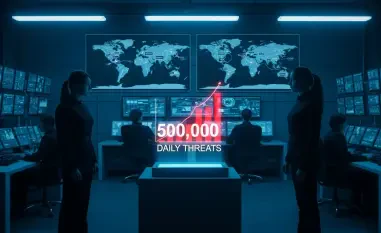The cybersecurity landscape continues to evolve rapidly as experts document a range of emerging threats and responsive measures throughout the week. Noteworthy developments include the dismantling of a criminal proxy network by Dutch and U.S. authorities, a move signifying enhanced international cooperation. This operation targeted IoT and end-of-life devices, which are becoming increasingly favored by cybercriminals. An observable shift in attack tactics shows cyber adversaries exploiting overlooked infrastructure, such as outdated software and open-source packages, to infiltrate high-value systems indirectly.
In a related trend, state-sponsored espionage persists as groups like the Russia-linked COLDRIVER attempt to deploy malware against political and journalistic entities. Meanwhile, threat actors continue to exploit zero-day vulnerabilities with sophisticated tools, as demonstrated by recent attempts linked to the Play ransomware operation. This highlights the critical role of timely vulnerability patching in defensive strategies.
Efforts to bolster cybersecurity also manifest in legal contexts, as demonstrated by recent rulings against the NSO Group over cyber exploits. Innovations in emerging technologies such as AI continue to shape the cyber threat landscape, raising new risks for software development environments. In response, enhanced privacy protocols and regulations are being adopted to secure digital interactions, reflecting a broader trend towards stronger compliance standards.
The ongoing interplay between novel cyber threats and defensive measures underscores the need for a comprehensive approach, integrating legal, technological, and international strategies to fortify global cybersecurity. As digital infrastructures expand, these strategies must evolve to effectively safeguard critical systems and data against increasingly sophisticated adversaries.













